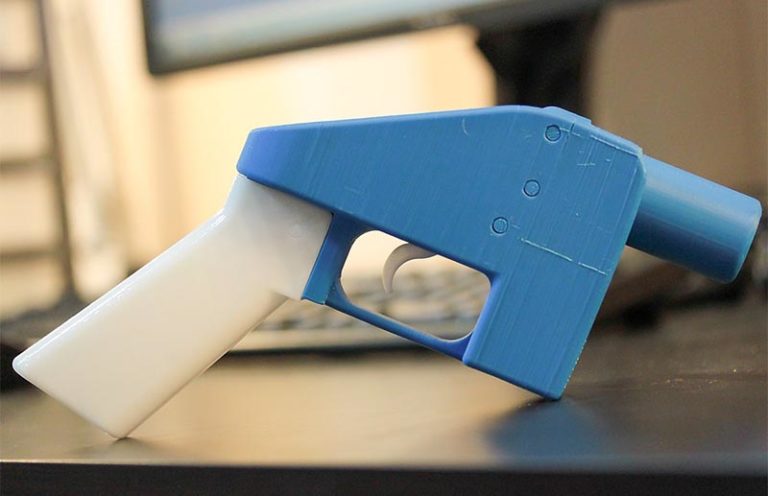
For many, the idea of a 3D printed gun remains taboo and mysterious, but they’re still legal to build in the U.S. and are becoming a bastion for gun rights around the world.
3D printed guns are one of the last types of untraceable firearms that are easily accessible to the home builder. While totally legal if you’re not prohibited from possessing firearms, they remain a source of some controversy.
They’re also a fascinating subset of modern gun culture, using technology that was formerly restricted to industry manufacturing but is now available to the consumer. People are manufacturing their own firearms, in the comfort of their own homes, with drastically less tooling than ever before.
We’ll cover the basics of 3D printed guns in this article. What they are, how they’re made, their legal status (for the moment) and how to get started if you were curious about possibly making your own.
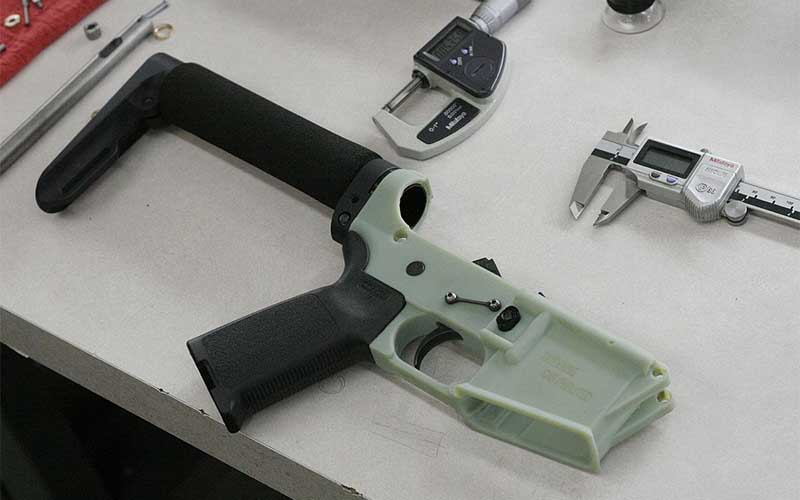
What Is 3D Printing? What Was The First 3D Printed Gun?
3D printing, also called “rapid prototyping” and “additive manufacturing,” is a way of quickly creating an object.
Imagine a miniature nozzle on a piping bag for decorating cakes. It makes a tiny drop of material, microscopic in size. Then it drops another one on top of it, and another and another. Eventually, a larger mass begins to take shape.
That’s a grossly simplified explanation, but that’s more or less how it works; tiny bits of material are put together and fused into an object. The operation is controlled by software (essentially computer-aided design or CAD) that takes all the dimensions and then builds an object from scratch.

To create these objects, 3D printers are supplied with feedstock made from various substances which are then melted into a state where they can be worked into their desired shape. The concept is similar to how a hot glue gun functions, only much more precise.
The 3D printers most common today (also the kind that are used to make 3D printed guns at home), typically use some sort of plastic filament as their feedstock. Industrial 3D printers can use certain metals as feedstock as well, and there are even versions of 3D printers that can use chocolate or plant-based materials in the food industry.
The first 3D printed guns, as far as anyone can tell, emerged around 2012 when Defense Distributed (and founder Cody Wilson) announced its plan to release the cut files for a plastic gun that anyone could make on a 3D printer.
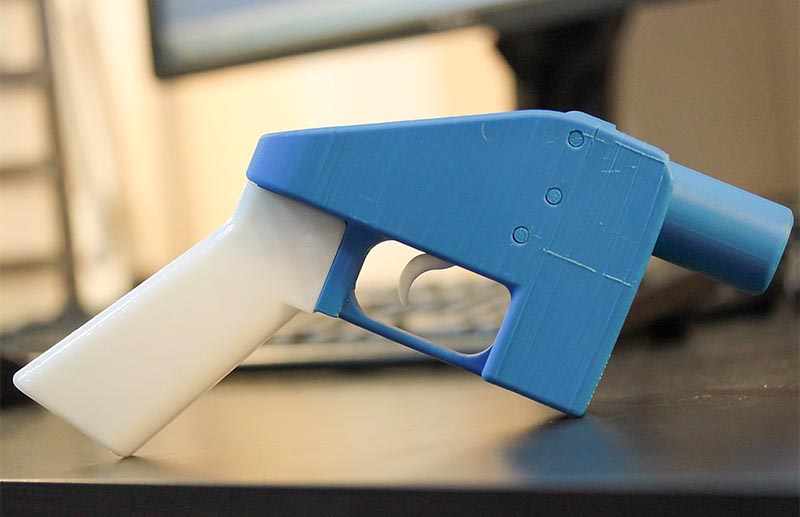
The gun was their “Liberator” pistol, a wholly plastic single-shot .380 that is usually good for one, maybe two shots before being destroyed…but the concept proliferated from there. Now there are dozens of quality designs in existence, and more are being developed every day.
In fact, some people even compete with them, such as in the Gun Maker’s Match.

The Gun Control Act And Homemade Firearms
As previously discussed in our article about ghost guns, the Gun Control Act of 1968 (nor the National Firearms Act of 1934) does not prohibit anyone from making their own firearm at home for personal use, so long as you aren’t already legally prohibited from possessing one.
While the federal government (and a number of state governments) is now requiring serialization and a background check for some partially complete receivers, that only applies to firearms that are manufactured for sale. As long as you’re manufacturing a firearm with the sole intention of personal use, it’s perfectly legal.
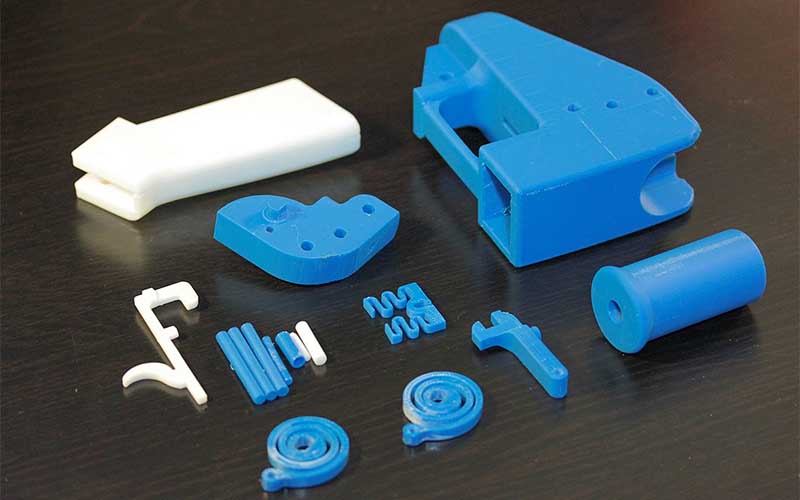
The only legislation that has any real impact on 3D printed guns is the Undetectable Firearms Act of 1988, which merely requires any firearm—homemade or otherwise—to be detectable by a metal detector.
In short, it is—at the time of this writing—within the bounds of the law to 3D print your own gun if you’re not legally prohibited from owning a firearm in general.
Why Would You Want A 3D Printed Gun?
People get involved in the 3D-printed firearm community for different reasons.
Some individuals view filling out a 4473 as backdoor registration and don’t want to participate in the process if they don’t have to.
Others simply find the technology fascinating and want to see if they can make their own functioning firearm, create their own original design or even develop designs with their own unique features that aren’t available from any commercial firearms manufacturers.
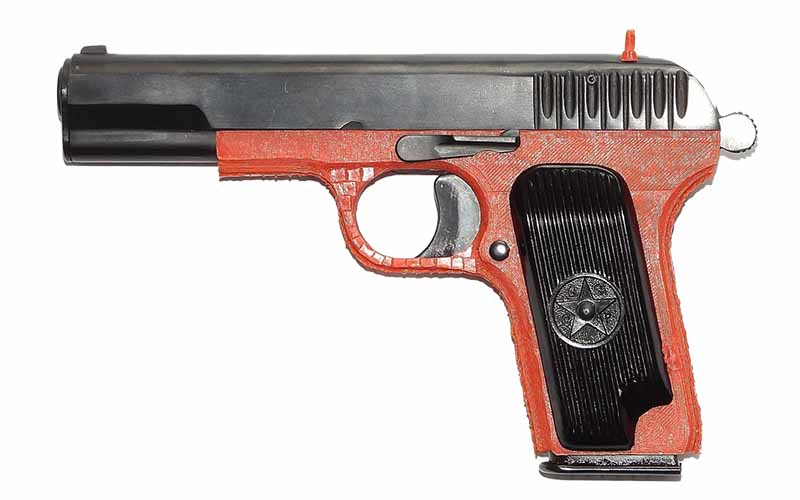
People also use 3D printers to create their own unique firearms accessories, small unobtainable parts such as rare stripper clips and even just firearm receivers that can be used to complete parts kits. Everything from vz. 61 Skorpion to AK to G3 parts kits have been rendered functional with the use of a 3D printed receiver.
Have there been some used for criminal activity? Of course, though quite rarely. Then again, so have factory firearms, and all the laws in the world don’t seem to have kept those out of the hands of criminals either. Regardless of anyone’s views on 3D printed guns, Pandora’s Box is now open. The technology is out there. The necessary files and knowledge are easily obtainable. You can’t stop the signal.
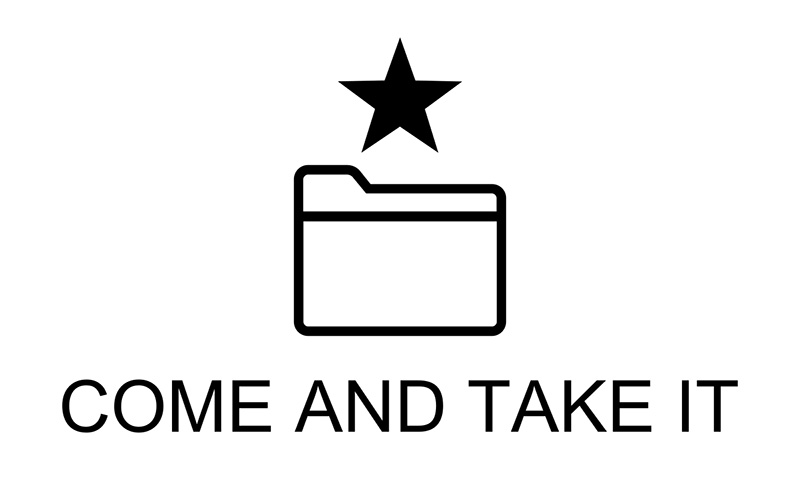
What Kind Of 3D Printer Do I Need To Make A Gun?
There are several key attributes for a 3D printer you’d want to use to print your own firearms, receivers or any other component that may withstand abuse.
First, consider the build area. The larger the receiver or other part you intend to make, the larger the build area of the 3D printer needs to be. Smaller areas are fine for handgun frames, but larger objects—such as stocks, rifle receivers and so on—will require a larger build area.
Extruder and bed temperature ratings are also important to consider, as these determine what materials you can use. Not all plastics are equal (Kydex is great for holsters but gun companies mold frames with nylon) so you’ll want to carefully consider what feed material you’ll be using before buying.
PLA is a common material, and so is ABS (an acrylic plastic with similar hardness properties to nylon) both of which are fine for making receivers.
Also look at what filament types a specific printer can use.
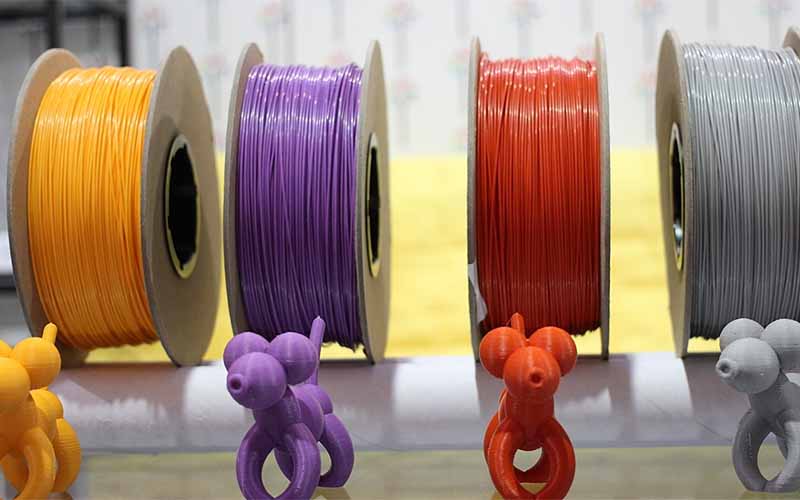
The printer bed is also important. Glass beds can produce ringing (a ripple or pebbling-like texture) on 3D prints, so make sure to look at that as well. Ringing is a cosmetic defect, rather than structural, but it’s good to know about.
The interface is also important. Having an onboard screen is a great feature, but it’s also important to be able to easily adjust settings if needs be. You also need to be aware of what kind of print files the printer is compatible with.
If looking at buying your own 3D printer, the final consideration is whether the printer is made to run quietly. It’s one thing to have a noisy machine if you live alone, but if you have roommates or a family that’s another story!
3 Awesome 3D Printers For 3D Printed Guns
Creality Ender-3 V2
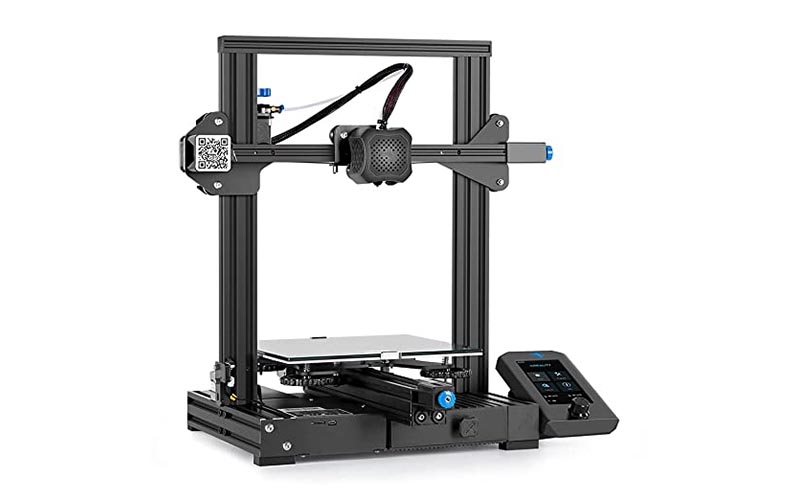
The Ender 3 V2 is a very solid entry-level printer and one of the go-to recommended models for those looking to print firearms. It has an open build area, but the build area itself is small. It only uses PLA filaments, but that isn’t an issue for pistol frames or similar components.
The Ender 3 has a heated bed and uses Cura slicing software, so file compatibility isn’t a huge issue. Its operation is relatively quiet (<50dB) and efficient (reaches temperature within five minutes), and is operated using a rotary knob-controlled LCD screen.
MSRP: $279 // creality.com
Artillery Sidewinder X1 V4
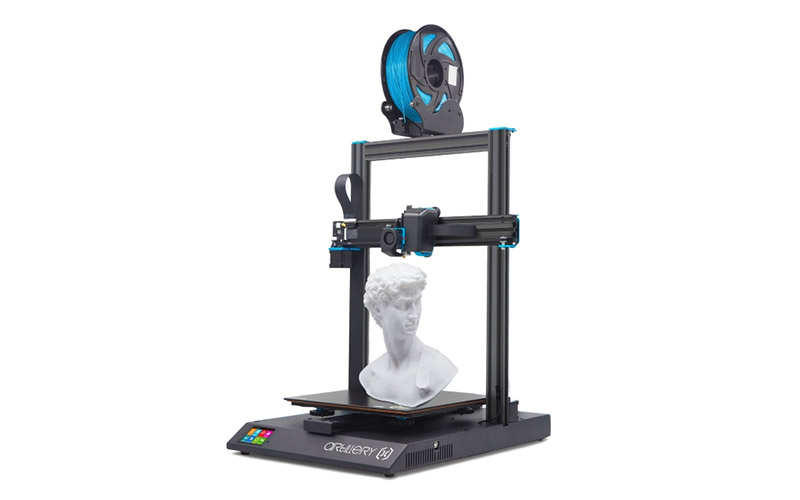
This is one of the most common 3D printers used for making guns. It’s feature-rich and has a mid-range price point.
The Sidewinder has a heated glass floor plate, with automatic leveling and dual z-axis synchronization. These features all help ensure a clean finished product. It has an open build area with generous volume at 300mmX300mmX400mm, and it can work with multiple filament types including PLA, ABS and more.
It has a touchscreen interface for easy operation and is relatively quiet (<40dB) to boot.
The Sidewinder is compatible with many—but not all— file types, but remains a viable 3D printer for building firearms.
MSRP: $419 // artillery3d.com
Prusa i3 MK3S+
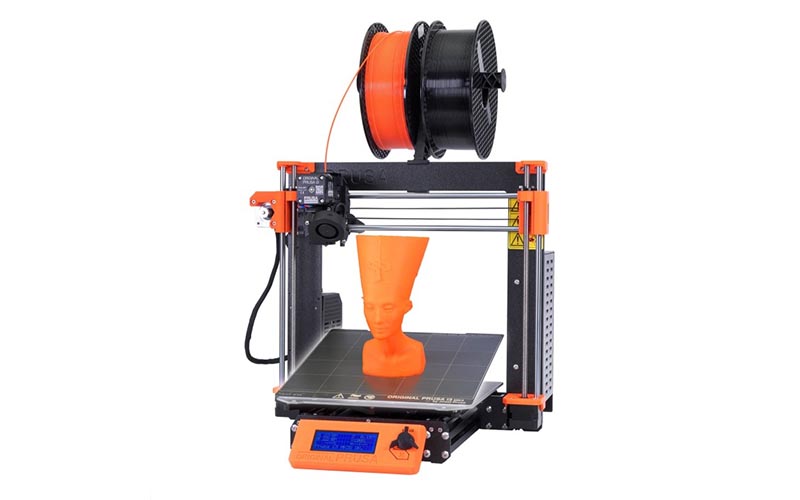
The i3 MK3S is more expensive, but it brings a lot of functionality to the table. Besides its open-source software that’s easily modified (better for designing your own prints or using multiple file types), the extruder can work with a lot of different materials including PLA, ABS, nylon, carbon fiber, polypropylene and even wood-based materials.
The build area may be on the small side, but the Prusa is designed for a lot more function than most other desktop printers, making it popular for industrial rapid prototyping (professional use) as well as with serious hobbyists. This printer is better suited for those interested in getting experimental with their prints rather than those who merely want to build established designs.
MSRP: $1,099 // prusa3d.com
Where To Find 3D Printed Gun Files?
The best starting place to find 3D printed gun files is Github. A number of different printable firearms as well as firearms accessories are available there. Another source is Thingiverse, but you’ll have to do some hunting to separate the toys from the real deal.
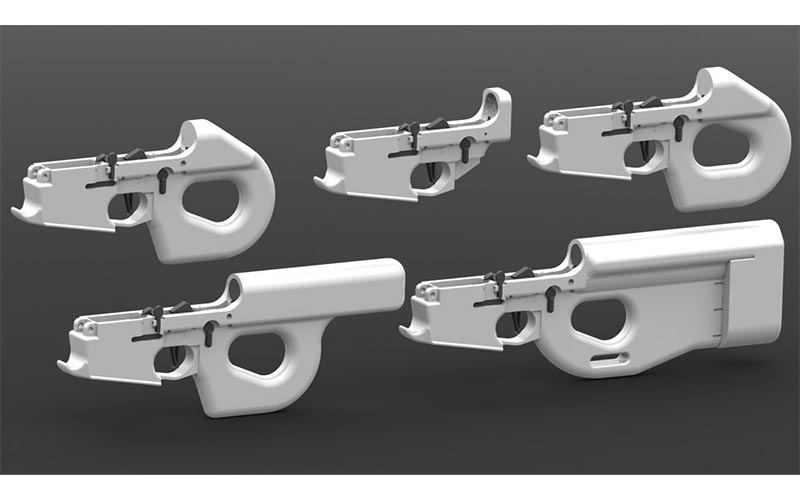
You could also download the Branwolfe1 Megapack which has dozens and dozens of prints on it in one location. And, of course, you can also browse the FOSSCAD subreddit and start down the Reddit rabbit hole which has a very active 3D printed firearm community.
Building 3D printed guns isn’t for everybody, but it is the next frontier in firearms innovation. It provides home engineers with the necessary tools for designing and creating their own firearms, improving upon existing designs and helping to ensure that gun rights remain accessible to all.
More DIY Stuff:
- How To Build A Zip Gun
- DIY Guns: RECOIL Magazine’s Guide To Homebuilt Suppressors, 80 Percent Lowers, Rifle Mods And More
- Building A 1911
- Blue-Collar AR DMR Build
- Building A Portable Precision Rifle

Next Step: Get your FREE Printable Target Pack
Enhance your shooting precision with our 62 MOA Targets, perfect for rifles and handguns. Crafted in collaboration with Storm Tactical for accuracy and versatility.
Subscribe to the Gun Digest email newsletter and get your downloadable target pack sent straight to your inbox. Stay updated with the latest firearms info in the industry.

![Best Concealed Carry Guns In 2025 [Field Tested] Wilson Combat EDC X9S 1](https://gundigest.com/wp-content/uploads/Wilson-Combat-EDC-X9S-1-324x160.jpg)


![Best 9mm Carbine: Affordable PCCs [Tested] Ruger Carbine Shooting](https://gundigest.com/wp-content/uploads/Ruger-Carbine-Shooting-100x70.jpg)
![Best AR-15: Top Options Available Today [Field Tested] Harrington and Richardson PSA XM177E2 feature](https://gundigest.com/wp-content/uploads/Harrington-and-Richardson-PSA-XM177E2-feature-100x70.jpg)
